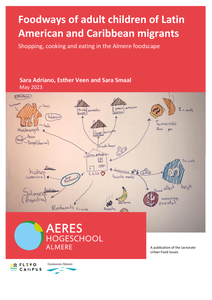Dit artikel gaat over de mogelijke introductie van micro-aardappelen, ofwel microtubers, op de Europese markt en de uitdagingen met betrekking tot alkaloïden. Aardappelen zijn wereldwijd essentieel voor voedselzekerheid, maar microtubers, kleine aardappelknollen, blijven relatief onbekend. Nederlandse producenten overwegen deze kleine knollen te gebruiken voor voedselproducten, maar de aanwezigheid van alkaloïden is een belangrijk aandachtspunt. Alkaloïden zijn natuurlijke stikstofhoudende verbindingen die in veel planten voorkomen, waaronder aardappelen (Solanum tuberosum L.). Sommige alkaloïden, zoals solanine en chaconine, kunnen schadelijk zijn bij inname in grote hoeveelheden, terwijl andere gunstige effecten kunnen hebben, zoals antioxidanten-eigenschappen. De regulering en etikettering van alkaloïden in voedsel variëren, wat de uitdagingen voor producenten benadrukt. Hoewel er interesse lijkt te zijn in microtubers in de Europese fine dining sector, zijn er momenteel weinig aanwijzingen voor een aanzienlijke markt voor consumptie van deze kleine aardappelen in Europa. In Oost-Aziatische landen worden microtubers voornamelijk gebruikt als pootgoed, wat de huidige beperkte kennis over het marktpotentieel in Europa benadrukt. Dit artikel benadrukt het belang van zorgvuldige teeltpraktijken en marktonderzoek voordat er grootschalige investeringen worden gedaan in de commerciële teelt van microtubers voor consumptie in Europa. De wetgeving met betrekking tot alkaloïden is momenteel nog niet concreet, en verder onderzoek is nodig om de gezondheidseffecten en mogelijke risico's beter te begrijpen. Samengevat, dit artikel biedt inzichten in de potentie van microtubers op de Europese markt, waarbij rekening wordt gehouden met de aanwezigheid van alkaloïden en hun impact op gezondheid en voeding. Het stimuleert producenten en onderzoekers om de mogelijkheden van microtubers verder te verkennen en te benutten.
DOCUMENT

Het project PreciSIAlandbouw heeft precisielandbouwtechnieken ontwikkeld en gevalideerd op vijf thema's: sensortechnologie, kennis en advies, robotisering, digitalisering, en verdienmodellen. Dit rapport bevat de resultaten van robotisering. Er zijn modules ontwikkeld om gewas en onkruid te onderscheiden en locaties van plantdetails nauwkeurig te bepalen.Hogeschool Saxion, lectoraat Lectoraat Smart Mechatronics and Robotics
DOCUMENT

Reducing the use of pesticides by early visual detection of diseases in precision agriculture is important. Because of the color similarity between potato-plant diseases, narrow band hyper-spectral imaging is required. Payload constraints on unmanned aerial vehicles require reduc- tion of spectral bands. Therefore, we present a methodology for per-patch classification combined with hyper-spectral band selection. In controlled experiments performed on a set of individual leaves, we measure the performance of five classifiers and three dimensionality-reduction methods with three patch sizes. With the best-performing classifier an error rate of 1.5% is achieved for distinguishing two important potato-plant diseases.
MULTIFILE

The current food environment in The Netherlands is considered obesogenic. Eighty percent of the products in supermarkets are unhealthy. The Wheel of Five is the well-established, science-based Dutch food-based dietary guideline (FBDG) developed to stimulate healthier choices. In addition, simple directions on food packaging, such as front-of-package (FOP) health logos, could also be helpful. However, these tools should be in line with each other, in order not to confuse the consumer. To study this, we evaluated two FOP nutrient profiling systems (NPSs) for their alignment with the Wheel of Five: Choices five-level criteria and Nutri-Score. For this, a small but representative sample of 124 products was selected from the Dutch food composition database (NEVO). For these products, the scores for Choices and Nutri-Score were calculated using the published criteria, whilecompliance with the Wheel of Five was established by using the criteria from Netherlands Nutrition Center (NNC). The Wheel of Five food groups were used to categorize the products. Differences between the Wheel of Five and Choices are smaller than with Nutri-Score, concluding that Choices ismore consistent with the Wheel of Five and might be an attractive alternation for a FOP health logo on the Dutch market.
DOCUMENT

This publication follows and analysis the proces in the region Westerkwartier in the Netherlands in their effort to built a whole new regionale food chain. In this report there is a remarkeble role for the knowledge instutions on vocational and applied level.
DOCUMENT

The research sets out to explore what adult children of migrants consider to be their eating culture and food identity. We do so by looking at how they shop, cook, and eat on a daily basis and what foods they feel connected to. A secondary goal of this research is to understand how important sustainable food is for this group. For this report, we invited adult children of migrants, who grew up in Almere to share their stories. Being born in the Netherlands with parents who were born abroad – in our case Latin-America and the Caribbean – children of migrants grow up in two different food environments simultaneously. Outside the home, they are surrounded by a Dutch food environment, while the eating patterns in and around their household or wider family setting may reflect the backgrounds of their parents.
DOCUMENT
